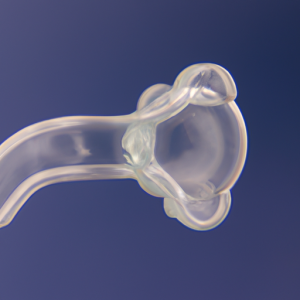Prostate health is a topic that is often overlooked or ignored by many men. However, the importance of understanding and addressing prostate-related issues cannot be stressed enough. In this comprehensive guide, we will delve into the world of prostate device, exploring its diagnosis, symptoms, causes, and treatment options. By shedding light on the significance of early detection and intervention, we hope to empower men to take charge of their prostate health and seek appropriate medical attention when necessary. From innovative technologies to common warning signs, this article aims to provide a holistic understanding of prostate device and equip readers with the knowledge needed to make informed decisions about their well-being.
1. "Understanding Prostate Device: A Comprehensive Guide to Diagnosis, Symptoms, and Causes"
The prostate is a small gland located just below the bladder in men. While it is a crucial part of the male reproductive system, it is also prone to various conditions that can affect a man’s health and quality of life. In recent years, the development of prostate devices has revolutionized the diagnosis and treatment of prostate-related issues. This comprehensive guide aims to provide a deeper understanding of prostate devices, including their role in diagnosis, common symptoms, and underlying causes.
Prostate devices are medical tools specifically designed to aid in the diagnosis and treatment of prostate conditions. These devices can range from non-invasive screening tools to surgical instruments used during procedures. One of the most commonly used prostate devices is the transrectal ultrasound (TRUS), which uses sound waves to create images of the prostate gland. TRUS is often employed to diagnose prostate cancer, detect abnormalities, and guide biopsies.
In addition to TRUS, another frequently used prostate device is the prostate-specific antigen (PSA) test. This blood test measures the level of PSA, a protein produced by prostate cells. Elevated PSA levels may indicate the presence of prostate cancer or other prostate-related conditions. The PSA test is an essential tool for early detection and monitoring of prostate cancer, allowing physicians to intervene at an early stage and improve treatment outcomes.
When it comes to symptoms of prostate conditions, they can vary depending on the specific issue. Some common symptoms include frequent urination, difficulty starting or stopping urination, weak urine flow, blood in the urine or semen, pain or discomfort in the pelvic area, and erectile dysfunction. However, it is important to note that these symptoms are not exclusive to prostate problems and may also be indicative of other underlying health issues. Therefore, consulting a healthcare professional for a proper diagnosis is crucial.
Understanding the causes of prostate conditions is essential in developing effective treatment strategies. While the
2. "Effective Treatment Options for Prostate Device: Exploring Innovative Technologies and Therapies"
Over the years, the medical field has witnessed significant advancements in the diagnosis and treatment of prostate conditions. These advancements have led to the development of various innovative technologies and therapies that offer effective treatment options for prostate-related issues. In this section, we will explore some of these groundbreaking approaches that are revolutionizing the way we diagnose and treat prostate problems.
One such innovative technology is the use of prostate devices. These devices are designed to aid in the diagnosis and treatment of prostate conditions. They come in different forms, such as prostate-specific antigen (PSA) testing kits, ultrasound devices, and even robotic-assisted surgical systems. These devices play a crucial role in accurately diagnosing prostate conditions and determining the most appropriate treatment plan for each patient.
One of the most common prostate conditions is prostate cancer. In the past, traditional treatment options for prostate cancer included surgery, radiation therapy, and hormone therapy. While these treatments have proven to be effective, they often come with significant side effects and risks. However, with the advent of innovative technologies, new treatment options have emerged that offer better outcomes and improved quality of life for patients.
One such technology is focal therapy, which is gaining popularity as a minimally invasive treatment option for prostate cancer. Focal therapy involves targeting and treating only the cancerous areas within the prostate, while sparing the healthy surrounding tissue. This approach significantly reduces the risk of side effects commonly associated with traditional treatments, such as urinary incontinence and erectile dysfunction. Focal therapy can be performed using various techniques, including high-intensity focused ultrasound (HIFU), cryotherapy, and laser ablation.
Another innovative treatment option for prostate conditions is the use of advanced surgical systems, such as robotic-assisted surgery. Robotic-assisted surgery allows surgeons to perform precise and complex procedures with enhanced dexterity and visualization. The robotic system provides a magnified, three
3. "Spotting the Warning Signs: Common Symptoms and Risk Factors of Prostate Device"
Spotting the Warning Signs: Common Symptoms and Risk Factors of Prostate Device
Prostate disorders affect millions of men worldwide, and early detection is crucial for effective treatment and management. One of the most valuable tools in this battle is a prostate device, which aids in diagnosis, treatment, and symptom relief. Understanding the warning signs and risk factors associated with prostate disorders can help individuals take proactive steps towards their urological health.
1. Common Symptoms:
a. Urinary Issues: One of the primary symptoms associated with prostate disorders is urinary dysfunction. Men may experience frequent urges to urinate, especially during the night. Additionally, they may have difficulty initiating urination, a weak urine flow, or a sensation of incomplete bladder emptying.
b. Erectile Dysfunction: Prostate disorders can also impact sexual functioning. Men may experience difficulties achieving or maintaining an erection, leading to frustration and anxiety.
c. Blood in Urine or Semen: In some cases, individuals with prostate disorders may notice blood in their urine or semen. This symptom should never be ignored and requires immediate medical attention.
d. Pain or Discomfort: Prostate disorders can cause pain or discomfort in the pelvic region, lower back, or genital area. This pain may be persistent or intermittent and can significantly impact an individual’s quality of life.
2. Risk Factors:
a. Age: Age is an essential risk factor for prostate disorders. As men age, their risk of developing prostate-related issues increases. Generally, men above the age of 50 are more susceptible.
b. Family History: Individuals with a family history of prostate disorders, such as prostate cancer, have a higher risk of developing similar conditions themselves. Genetic predisposition plays a significant role in the occurrence of these disorders.
c. Ethnicity: Certain ethnic groups, particularly African-American men, have a higher risk of developing prostate disorders.

